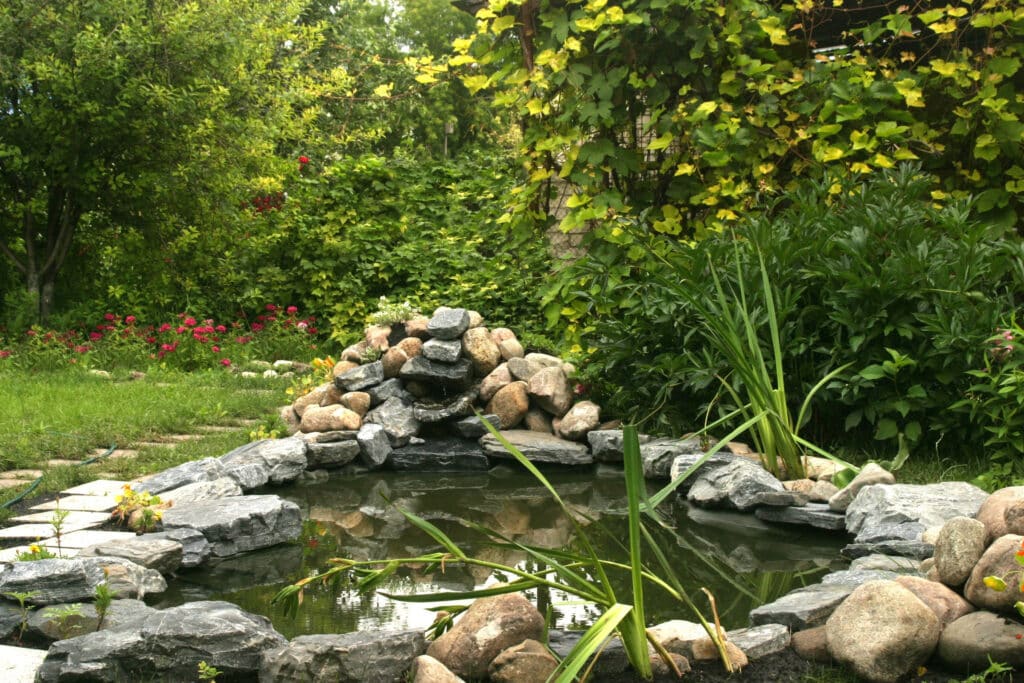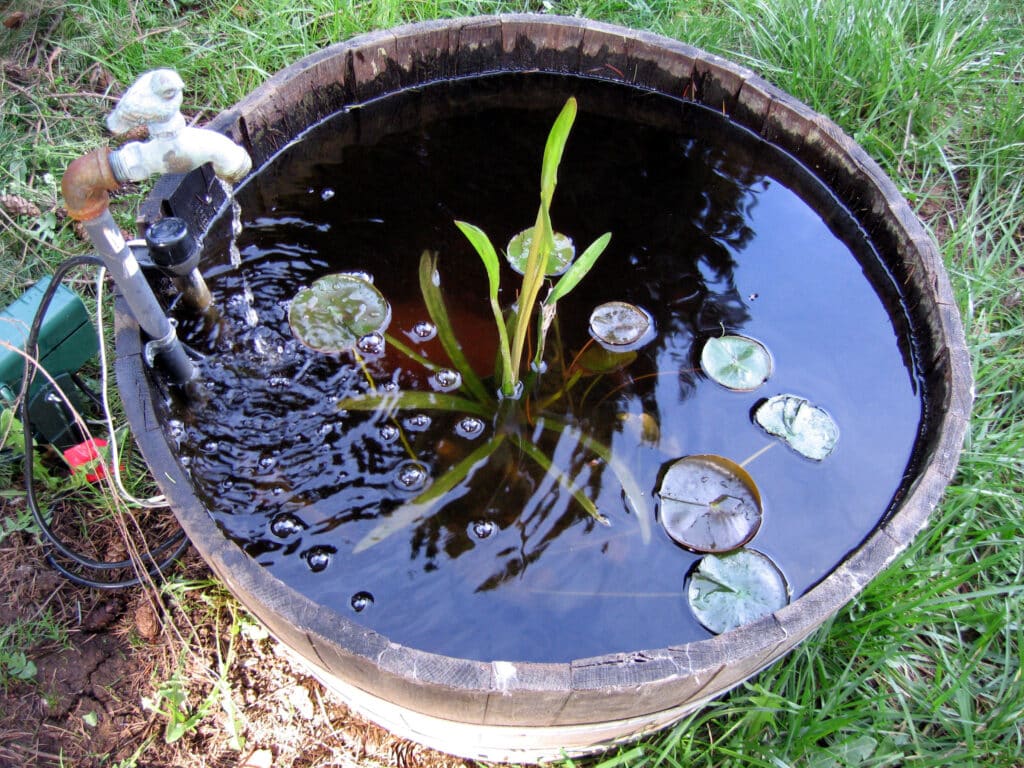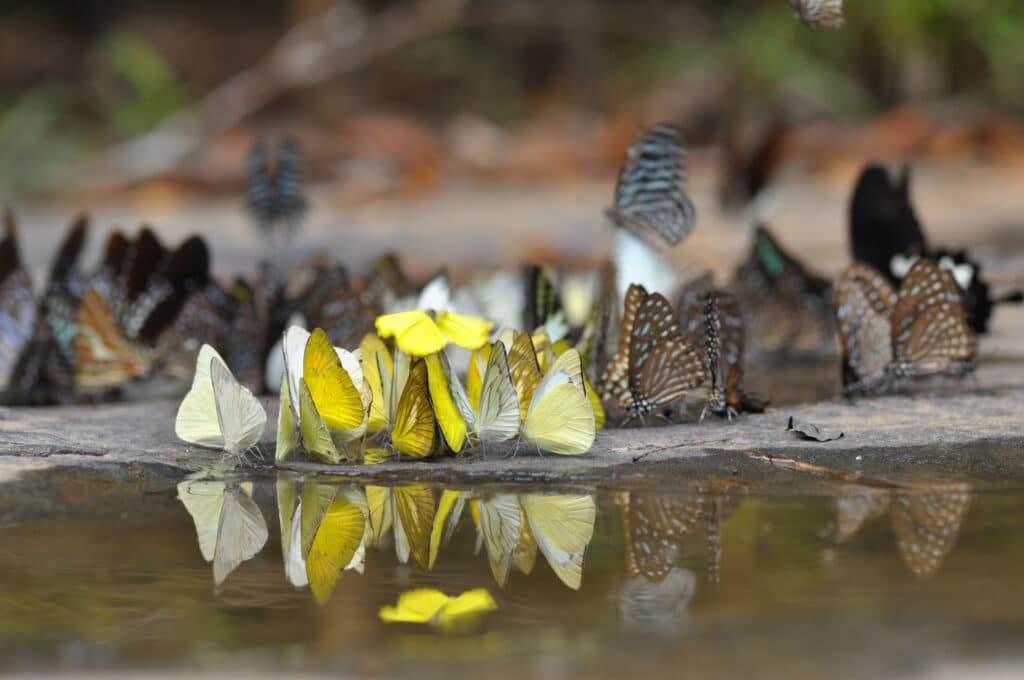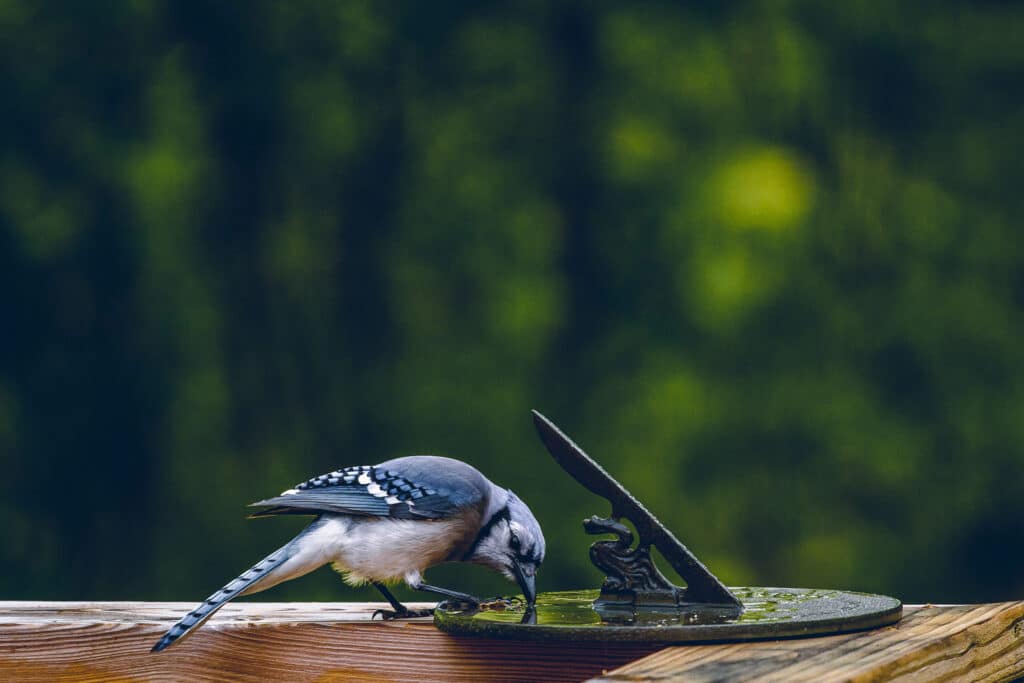Like humans, wild animals need water. They use it for drinking and bathing, and some species live in water or need it for reproduction. Even to tiny insects, water is precious on hot, dry days. In arid habitats, it’s an oasis that may save a life. Just about any stand of water in your yard, from a tiny puddle to a pond, will be used by one kind of animal or another. Provide water for wildlife, and you’ll soon notice lots of activity around it. How to make water available is limited only by your imagination. Here are some effective ways to do it.
Birdbaths for drinking and bathing
The marketplace is filled with beautiful and unique fountains, cascading water features, and elaborately designed pond kits, but wildlife will also be satisfied with something as simple as a large saucer of always-fresh water.
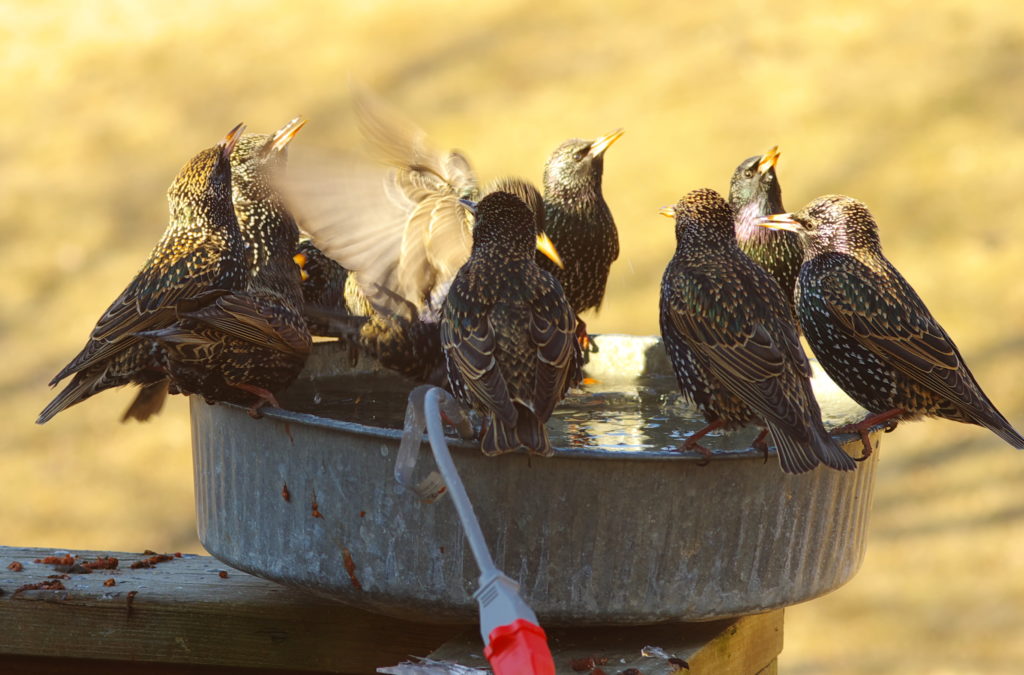
Any “ole thang” can be a birdbath; this one’s even heated! Birds aren’t particular as long as it holds fresh water. (Jon K. / Flickr; CC BY-NC-ND 2.0)
Birdbaths are common in summer, but few people consider providing one in winter. Yet, a heated birdbath kept filled through the freezing temperatures of winter may be the only ready source of liquid water in your entire neighborhood. Heated ones maintain a temperature just above freezing, costing only pennies a day. If you had to choose, the winter birdbath would probably be more essential than a summer one. (Note: Never add anti-freeze; it’s poisonous.)
Birdbaths should slope and be no more than 2 to 3 inches (5.1–7.6 cm) deep in the center; any deeper and smaller birds won’t use it for bathing. You can raise the bottom by adding a stone for birds to stand on. A flat, rough surface is best—it helps birds keep their footing. After dark, you might see raccoons, opossums, and other climbing animals using it.
- Place it where you can watch the activity.
- Place it near a “staging” area. Birds like to approach from the safety of a nearby shrub or tree.
- Watch for cats. If they’re catching birds while they drink or bathe, move the birdbath to a spot where cats can’t hide nearby.
- Place it where it can be easily accessed for cleaning and filling.
- Consider a second birdbath on the ground, with no pedestal, so rabbits and other non-climbers can use it.
Consider a pond
A pond, even a tiny one, is a worthwhile and visually appealing addition to a backyard wildlife habitat. Frogs, toads, dragonflies, and, of course, fish are among those that flourish in a pond environment. Nearly all other wildlife will make use of it, too. A water pump isn’t necessary, but a gentle movement of the water will infuse oxygen into it.
If digging a pond isn’t for you, a whiskey half-barrel with a liner or a sizable ceramic flowerpot with plugged holes will work fine and be pretty. DIY whiskey barrel pond video
Think small
Mud puddle: Butterflies like to sip from puddles. All it takes is a small area of dirt or sand kept wet near your butterfly garden. A slowly dripping garden hose may be all you need to keep the puddle a puddle.
Any clean source of water will do
As the above photo illustrates, thirsty animals appreciate a good, long drink of clean water wherever they can find it. On a hot, dry day, water is vital.
A simple saucer
Set out a saucer containing water and partially submerged pebbles. Place it on a pedestal or table near nectar plants. Insects will perch on the pebbles while they drink.
More reading:
Moving water delights wildlife
Why you should create a backyard wildlife habitat



